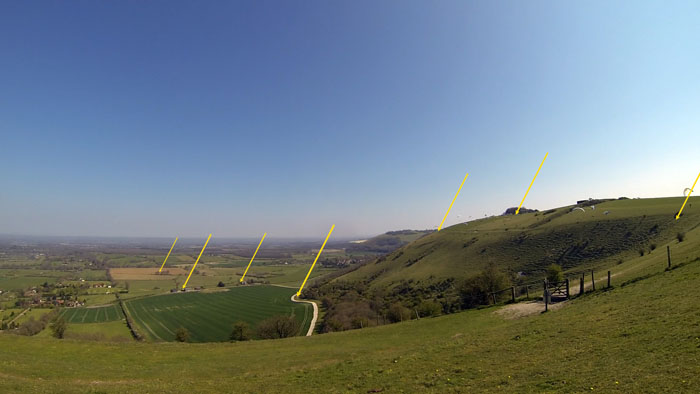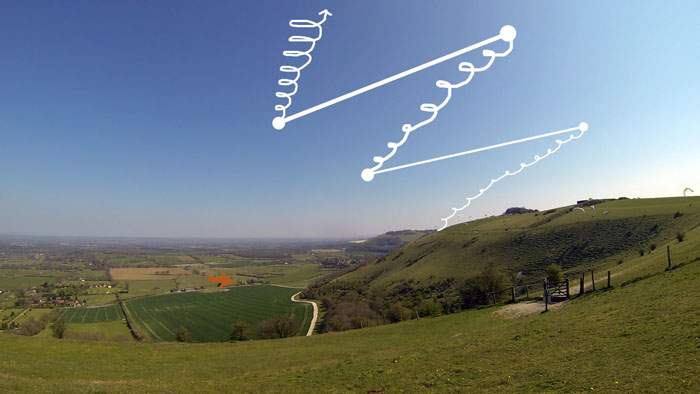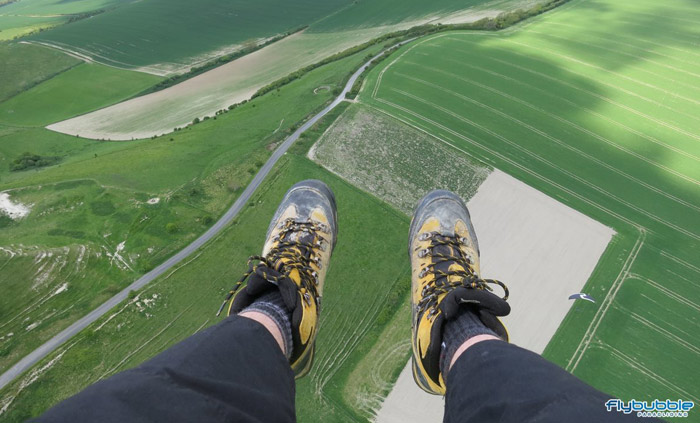
Flybubble explains how to escape from any small hill when trying to thermal and go cross country. Especially useful for flying sites that face away from the sun, like Devil's Dyke near Brighton in South East England. Exploring the content of the video and extending the ideas to help you get away.
So first, here are the foundation skills you need:
Let’s explore the ideas some more. This video was based on a north-facing ridge which is the shaded side in the northern hemisphere. This makes the slopes a poor thermal source, and increases the likelihood of the distant fields being relatively warmer and therefore producing more thermals.

Always think about the angle of the sun on the surface, and where it will be warmest.
If the wind is blowing against this ridge line, there should be a nice even lift band. But as the thermals begin to pull air up (and down) this lift band is disturbed. Yet pilots usually cling to the ridge, tacking up and down, too scared of landing down below to risk pushing out to find a thermal.
What if they leave the ridge lift and find nothing? How do you know where the thermal is? How do the XC pilots know?
Most of the time, we don’t know.
We know that in theory there is a better chance that the thermals will form away from the shaded ridge line. We know that if it’s getting hard to ridge soar, it’s likely that thermals are messing up the ridge lift and we need to leave it. We know that away from the ridge, it’s easier to climb because the traffic can follow a free circle. So we take a chance, and risk landing, every time. But there are a few tricks you can use to stay up.
If you encounter any lift, turn directly into wind and fly as far upwind as you can while in the lift. You should encounter a sudden spike in lift (the strongest core) in which you should turn tightly in a 360. Expect a sharp transition into sinking air if you leave it too late.
In light wind, the thermals will lift straighter off the fields, and there will be some sinking air between them and the ridge, so the zigzag technique is vital, building up height in steps until you have the necessary glide range to reach the good stuff.

When pushing out on a glide, your best glide angle will be reached with at least half speed bar. Use it, you’ll go further against the headwind and inter-thermal sink.
In strong wind, the lift band is more reliable, but the same theory still applies. The weaker thermals are pushed against the ridge, and get caught in the accelerated flow over the crest of the hill, making them fairly useless for getting away from the hill.

Soar out to the upwind edge of the lift band, the furthest position where you can maintain height. Now keep an eye on your GPS groundspeed. When it increases, there’s a thermal upwind of you, blocking the prevailing wind slightly – head out and away from the ridge. The sink is often less dramatic on a windy day, as all the air near the ridge is forced upwards. You also have a much better downwind glide. This means you should be able to search far ahead of the ridge because you can glide a long way back to the sure ridge lift.

So when trying to get away from a small hill, be forward thinking! Aim to work on getting as far upwind as possible.
Brought to you by Flybubble
Like what we do? The best way to thank and support us is to buy gear from us and recommend us. You can also subscribe to Flybubble Patreon. Thank you!
